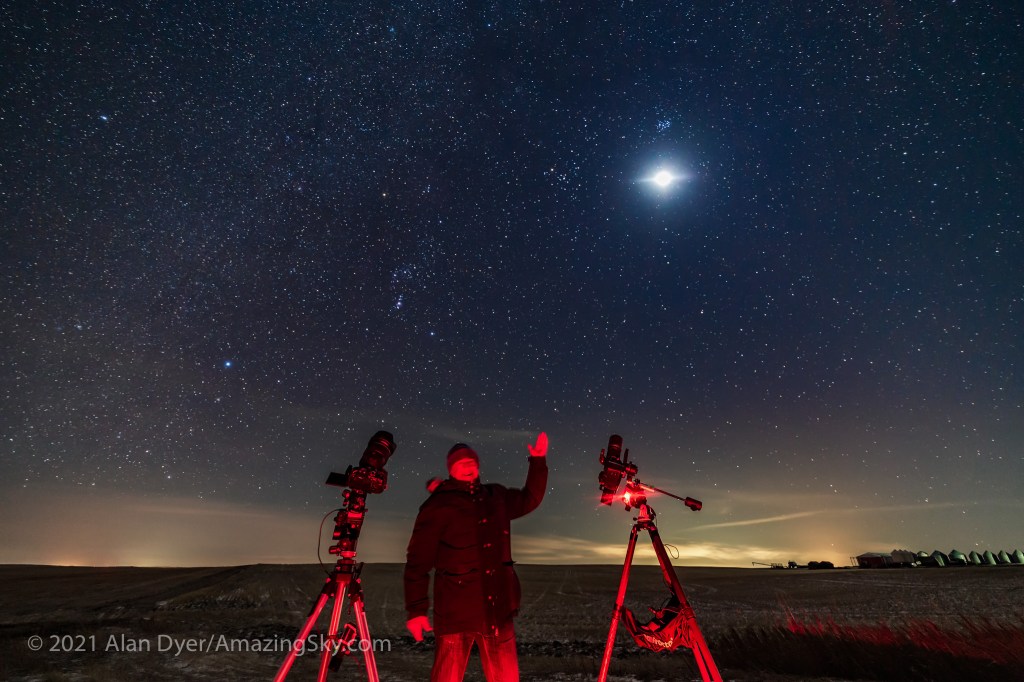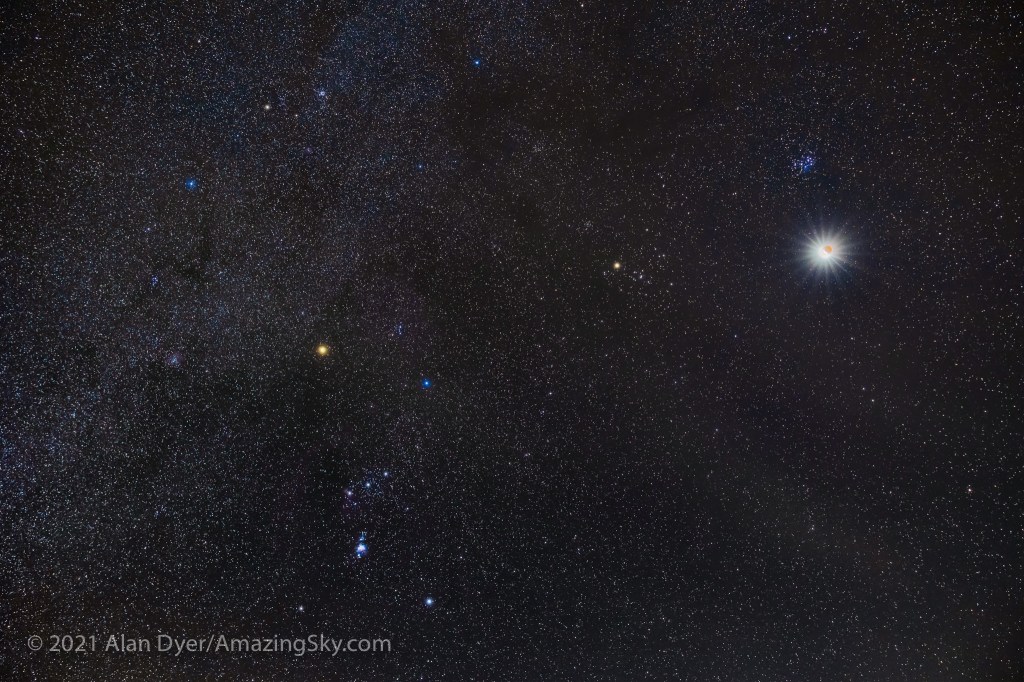
It’s been over 10 years since I’ve last had the luxury of observing an eclipse of the Moon from the comfort of home. Once again, a chase was needed.
During the post-midnight wee morning hours, the Moon was set to once again pass through the Earth’s shadow, this time presenting us with a deep partial eclipse, with 97% of the Full Moon’s disk immersed in the umbra and deep red.
We had another lunar eclipse in 2021, six lunar cycles earlier on May 26, an eclipse that was barely total and, for me, positioned low in the southwest at dawn. I chased that eclipse north to Rocky Mountain House, Alberta, to find clear skies on eclipse morning.

Every lunar eclipse I’ve seen from Alberta since December 2010 I’ve had to chase to find clear skies. While the chases were all successful, this time I was hoping to stay home and enjoy the eclipse without a long drive to seek clear skies, and to then employ a telescope to shoot the Moon in close-up. In the days before the eclipse, the forecasts changed daily.
On the day before the eclipse, things looked bad, with high clouds forecast for home.

It looked like a trip to north-central Alberta was warranted, perhaps to Wainwright. But rather than book a motel, I decided to wait to see if the forecast might improve. And sure enough it did.

By the morning of eclipse day, prospect for clear skies from home looked better Or perhaps a short drive east would suffice. With luck!
But by the evening of the eclipse, clouds were not cooperating. The actual views from satellites showed lots of cloud over my area (as the view out the door confirmed!), and it didn’t look like the clouds were going away.

But as the previous forecasts called for, clear skies were to be found to the north. So at 11:30 pm, with the eclipse starting in less than an hour, I packed up the car and headed north to as far as I could get — and hopefully as far as I need to get — to be assured of clear skies.

It worked! The eclipse was well underway as I made my way north, stopping to check its progress and the state of the clouds. As expected, about 90 minutes north I drove out from under the clouds you can see to the south in the photo above, where I had come from.
I chose a side road and pull off near Rowley, Alberta. I had enough time to set up three cameras, two on polar-aligned trackers to take longer, wide-field images of the Moon amid the stars, plus the static camera for the selfies.

The red Moon below the blue Pleiades was the unique sight at this eclipse. It can only happen if an eclipse occurs in mid-November and that won’t happen for another 19 years, on November 18, 2040, in a total eclipse visible only from the eastern hemisphere.
After some mid-eclipse equipment woes — a tracker deciding to come loose from the tripod, and a lens that refused to focus — I also took some wider shots of the Moon among the stars of Taurus.

Despite writing an extensive blog on how to shoot this eclipse, it did prove to be more of a challenge than I had anticipated. The portion of the Moon outside the umbra, even at mid-eclipse, remained very bright, and overexposed and flared in the frames with long enough shutter speeds to record the stars. A full total eclipse is easier to shoot!

However, I can count this eclipse chase as a success. Of all the total (or near total in this case) lunar eclipses visible from my area of the world since 2001, I’ve seen them all. But almost all required a chase.
Will that be the case next year? We have two total lunar eclipses in 2022: on May 15 (with the Moon rising at eclipse time as seen from here in Alberta), and again six lunar cycles later on the morning of November 8, 2022, which is 12 lunar cycles after this most recent eclipse. We are in the middle of a nice run of 4 lunar eclipses, three total and one near-total.
I suspect I will be chasing both of those!
— Alan, November 20, 2021 (AmazingSky.com)


Some superb images in this post, Alan.
Nice Alan. Good chase.
Thanks so much for sharing this! I’ve shared it with others, too!